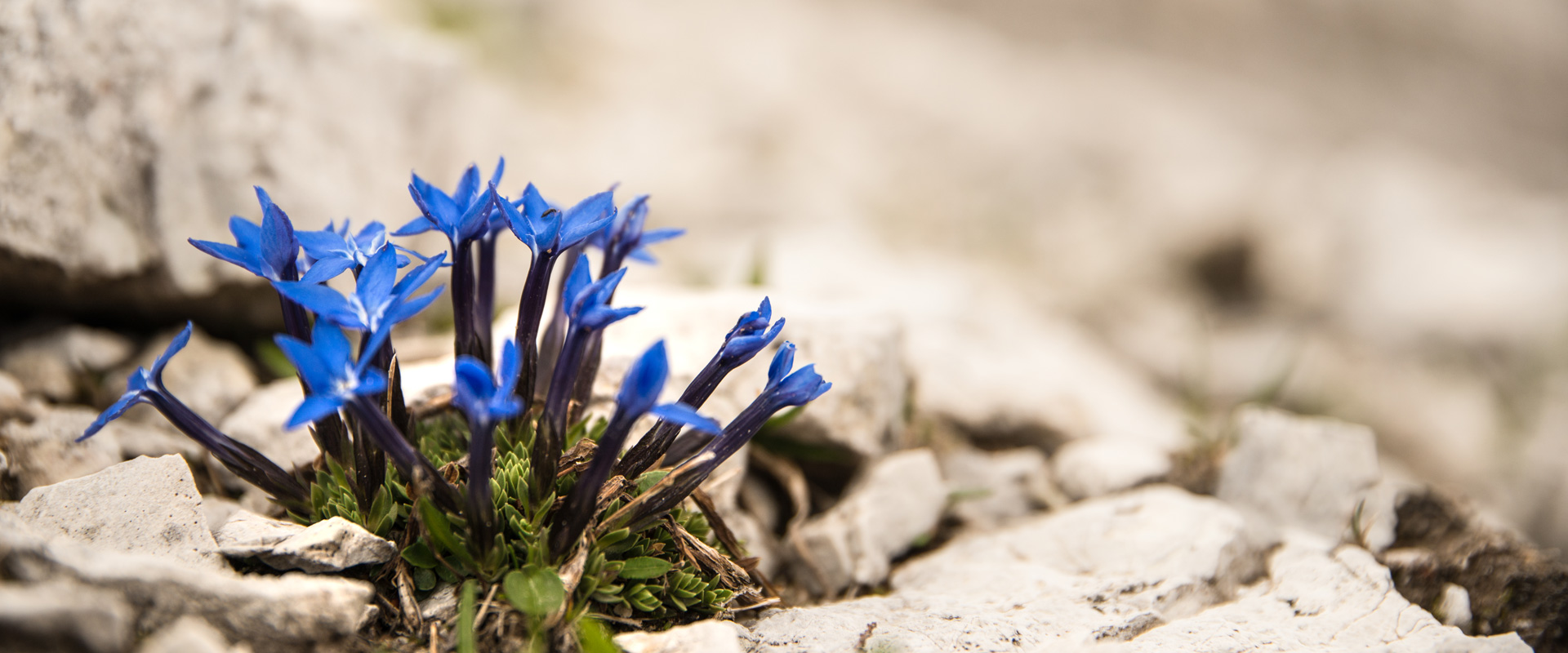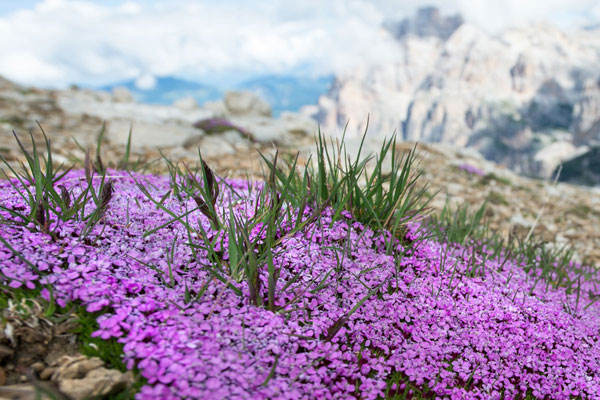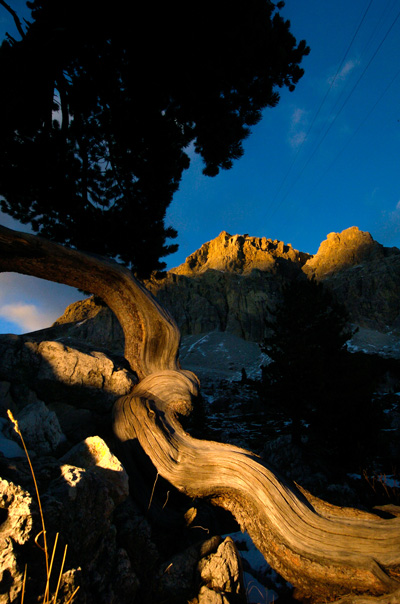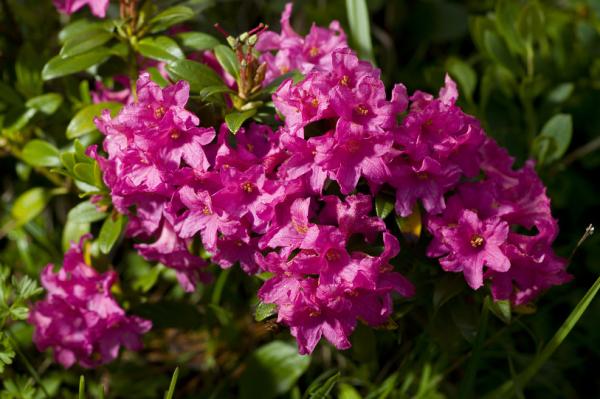
©Stefano Zardini
A gateway to the Ampezzo Dolomites Natural Park and the Sennes and Fanes Natural Park, the Cortina Delicious area is a great nature oasis.
An ideal habitat for ibex and chamois, it is home to marmots, hares, partridges and even eagles, which hunt and nest here.
Further down towards the valley live black grouse and nutcrackers.
You are likely to hear the unmistakable shrill whistles of the loveable marmots keeping guard and warning of your approach.
Not to be missed in June is the spectacular pink flowering of the "Rhododendron ferrugineum”.
From the woods of the valley floor roe deer and red deer come up as far as the line of high-altitude meadows.
There is the glimmer of ancient lakes of glacial origin set in the rock.
Contorted in anguish, the secular stone pines render the landscape truly unique, at times becoming genuine works of art.
The Cortina Delicious area boasts a great topographic diversity: from subalpine coniferous forests to rocky high mountain ridges.
Depending on the habitat, here you can admire the typical animal and plant species of the Dolomites.
Walking along the paths, you will be astonished to see the many many varieties of colourful flowers, some of them grown in extreme environment.
Spruce forests
Area: north side of the 5 Torri (locality Bai de Dones), west slope of Mount Pore (locality Andraz)
Flora: asclepiadean gentian, spotted orchid.
Fauna: roe deer, pine marten, wood grouse, pied red woodpecker, Eurasian pygmy owl.


Vegetation at a high altitude
Zone: Nuovolau (peak), Lagazuoi Piccolo, Cima Falzarego, Averau, Lagazuoi Grande.
Flora: campanula morettiana, rock rampion, draba Dolomitica, auricola, androsace di Hausmann.
Fauna: golden eagle, raven, nuthatch, short-tailed snow vole.
Larch and stone pines
Zone: north side of the 5 Torri (high part), around Malga Giau and Albergo Sasso di Stria
Flora: alpine clematis, Rhododendron ferrugineum, martagon lily
Fauna: nutcracker, three-toed woodpecker, black grouse, boreal owl.
Mountain pines, alders and rhododendrons
Zone: east side of the Nuvolau (mountain pines), Mount Pore and Lana Ridge (alders and rhododendrons), Lagazuoi, Cime Falzarego (south side).
Flora: dwarf rhododendron, hairy Alpenrose, aconite, round-leaved wintergreen.
Fauna: collared blackbird, chamois, marsh tit.
Mountain meadowland
1. Continuous meadowland
Zone: 5 Torri, Falzarego, Giau Pass, Lana Ridge - Mount Pore, Valparola.
Flora: arnica, spotted gentian, yellow anemone, Nigritella nigra.
Fauna: marmot, chamois, Greek partridge.
2. Discontinuous meadowland
Zone: Alpe di Lagazuoi, Col dei Bos, Nuvolau, Sasso di Stria.
Flora: white alpine anemone, least primrose, mountain aster (Aster alpinus), Alpine thrift, mountain avens.
Fauna: hare, stoat (ermine), snow grouse.
You shouldn’t miss the gorgeous, intensive rhododendron bloom in early summer. The intensely pinkish-red petals make this mountain flower distinctive.
The “Rhododendron ferrugineum” is part of the Ericacee family. The name Rhododendron comes from the Greek words “rodon” which means “rose” and “dendron” which means “tree”, thus rose tree.
In German, the rhododendron is called Alpenrose, Rose of the Alps, because it grows up to an altitude of 2000 metres. In the Apennines, it is also called the "Rose of the Dead", as, according to an ancient legend, it originated from the blood of a young man who committed suicide for love.
To fully enjoy the colourful blooming, which unfold its full splendour in July, we recommend a hike on path no. 419, which connects Col Gallina with the 5 Torri and is suitable for all ages.

.JPG)
THE MARMOTS
It is very likely that you will spot marmots between the 5 Torri, the Falzarego pass and the Giau pass. Or rather, you will be spotted by the marmots who announce your presence to their fellows: you will hear the unmistakable shrill whistle of the guards who watch over the cute, frolicking puppies and the siesta or the sunbathing of the other marmots.
Then you have to stop and wait until the alert is over amd, with a bit of luck, you will see them.
They live in colonies of different families, formed respectively by a couple and their last two litters. Marmots live in deep burrow systems and hibernate there through the winter.
Once they were hunted for their soft fur, and marmot fat was supposed to work miracles for rheumatic pain.
Today they live undisturbed and fear only eagles, foxes and stone martens.
You can also observe their colonies from the terraces of many of our refuges.
Hard to believe but true: walking along the paths of the Cortina Delicious area, you can find fossils of sponges, sea urchins, molluscs, gastropods and algae, and all this at an altitude of over 2106 metres above sea level!
There is nothing strange in this if you consider that the history of the mountains of the Lagazuoi - 5 Torri area began precisely in the sea about 229 million years ago!
As a result of a series of favourable circumstances, the region gradually acquired the conditions of a tropical sea, and thus the typical flora and fauna of that environment began to develop.
The fossils thus testify to life in the water and on land as it was here, in the midst of these mountains, millions of years ago.
There is nothing more thrilling than to walk on the so-called San Cassiano Formation searching for organisms formed in that far-off period.